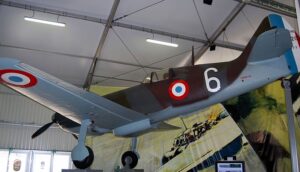Time Period: World War II
Country of Origin: Soviet Union
Type: Trainer Aircraft, Fighter Aircraft
Manufacturer: Yakovlev
Yakovlev UT-1 Aircraft Overview
The Yakovlev UT-1 was a Soviet single-engine training aircraft designed and built by the Yakovlev Design Bureau in the early 1930s. It was primarily used to train military pilots in the Soviet Union.
The UT-1 was a low-wing monoplane with fixed landing gear and an enclosed cockpit for the instructor and the student pilot. It was powered by a Shvetsov M-11 5-cylinder radial engine, which gave it a top speed of around 245 km/h (152 mph) and a range of 600 km (373 miles).
The UT-1 was known for its good handling characteristics and was considered an excellent training aircraft. It was used extensively by the Soviet Air Force during World War II for pilot training, and a total of around 7,000 UT-1 and its variants were produced between 1936 and 1946. Some examples of the UT-1 remain in use today as civilian sport aircraft.
Yakovlev UT-1 Specifications
- Crew: one
- Length: 5.75 m (18 ft 10 in)
- Wingspan: 7.3 m (23 ft 11 in)
- Height: 2.34 m (7 ft 8 in)
- Wing area: 9.58 m2 (103 sq ft)
- Empty weight: 429 kg (946 lb)
- Gross weight: 597.5 kg (1,317.5 lb)
- Powerplant: 1 × Shvetsov M-11Ye , 111 kW (150 hp)
Yakovlev UT-1 Performance
- Maximum speed: 257 km/h (160 mph, 140 kn)
- Range: 670 km (419 mi, 364 nmi)
- Service ceiling: 7,120 m (23,360 ft)
- Rate of climb: 7.4 m/s (1,457 ft/min)
Yakovlev UT-1 Armament
- Guns: 2 x 7.62mm ShKAS machine guns (Attack version)
- Rockets: 2 or 4 x RS-82 (Raketniy Snaryad – rocket shell) (Attack Version)










